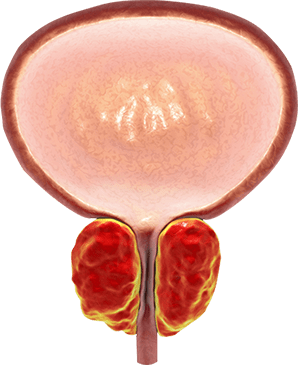The disease affects men of presenile and elderly age. After 60 years with each passing year, the risk of prostate cancer increases for 3-4%. At a younger age, the tumor is rarely fixed: men under the age of 60 - no more than 7% of all newly derived diagnoses.
In most countries over the world, the incidence is progressively increasing. Partially, it is connected with an increase of life expectancy and introduction of methods of early diagnosis, but the true increase in the prevalence of pathology is out of doubt. Despite the slow progression of disease and the high diagnostic information of the PSA method, which was introduced into cancer practice as far back as the 1980s, more than half of newly diagnosed cases of prostate cancer occur in the late stages with seeding of cancer cells into the lymph nodes and metastasis.




